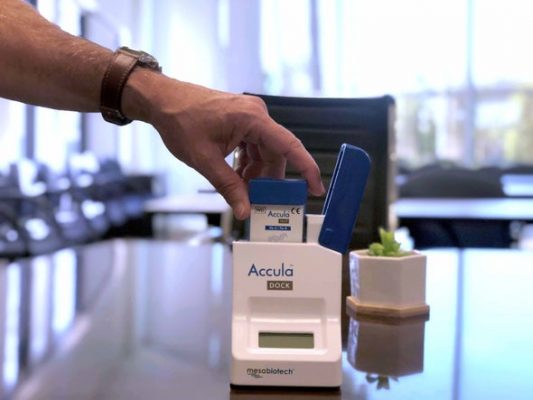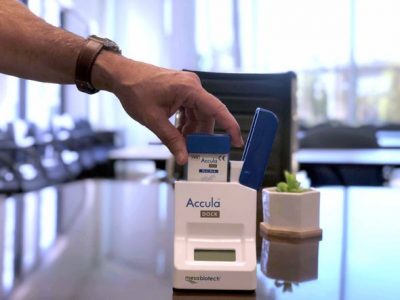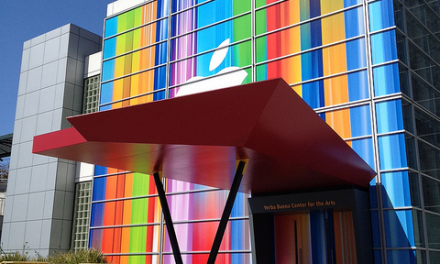 PCR-based tests are being rolled out in hospitals nationwide, and the Food and Drug Administration is fast-tracking novel approaches as well
PCR-based tests are being rolled out in hospitals nationwide, and the Food and Drug Administration is fast-tracking novel approaches as well
By Jim Daley – Scientific American
April 06, 2020 – As the new coronavirus explodes in cities across the United States, public health agencies and hospitals are making testing—which was initially plagued by significant shortages—increasingly available. And biotech companies are ramping up production of test kits—but states are still struggling to meet demand.
COVID-19 testing is currently available in every U.S. state, as well as in Washington, D.C., Guam and Puerto Rico, according to the U.S. Centers for Disease Control (CDC). As of today, 92 U.S. public health laboratories had completed the CDC’s verification process and were offering tests. The CDC’s own labs have tested 4,654 specimens, and public health laboratories have tested 98,576.
(BIZ INDIA Online News – Editor’s Update: As of April 13, 2020, there were 1,921,645 people with Covid-19, of whom 446,960 had totally recovered, 42,348 were in serious condition, and 119,353 had died).
Testing availability varies by state. A sampling of state public health agencies in New York, California and Texas, all referred Scientific American’s questions about such availability, as well as about where patients should go to get tested, to their respective coronavirus information pages. But the basic process is the same nationwide.
The first step in any coronavirus test is collecting a sample. Doing so involves placing a sterile swab at the back of a patient’s nasal passage, where it connects to the throat via the nasopharynx, for several seconds to absorb secretions.
Scott Wesley Long, a clinical microbiologist who directs Houston Methodist Hospital’s diagnostic microbiology lab, says the swab is thin—less than three millimeters in diameter at its tip. “Once you place it in the back of the throat, it’s uncomfortable, but you can still breathe and talk,” he says. “It’s not as bad as it looks.” After a sample is collected, the swab goes into a liquid-filled tube for transport.
Shortages of swabs and reagents for collection kits were among the several roadblocks that stymied public health agencies’ ability to perform widespread testing in recent weeks, according to David Harris, who directs the biorepository at the University of Arizona.
Harris says the university produced 1,600 generic collection kits last weekend to distribute to local health providers free of charge to help fill the gap, adding that all such kits are pretty much the same. The university plans to produce thousands more until availability begins to meet demand.
Recently, two health start-ups began marketing at-home collection kits that they claimed would allow patients to take their own samples and send them to labs for testing. The Food and Drug Administration quickly issued a warning that no such tests have been authorized, and the companies halted sales of the kits, which had been priced at about $170 to $180 apiece.
VIRAL DETECTION
To determine whether a nasopharyngeal sample is positive for the coronavirus, biotechnicians use a technique known as reverse transcriptase polymerase chain reaction, or RT-PCR. The World Health Organization’s and CDC’s test kits both use this method, as do all of the kits the latter has approved to date.
The COVID-19 RT-PCR test is a real-time reverse transcription polymerase chain reaction (RT-PCR) test for the qualitative detection of nucleic acid from SARS-CoV-2 in upper and lower respiratory specimens (such as nasopharyngeal or oropharyngeal swabs, sputum, lower respiratory tract aspirates, bronchoalveolar lavage, and nasopharyngeal wash/aspirate or nasal aspirate) collected from individuals suspected of COVID-19 by their healthcare provider.
The CDC’s 2019-nCoV Laboratory Test Kit – Image Credit: Wikipedia
“There’s a lot of hands-on work involved” in performing RT-PCR tests, Long says. First, a technician extracts viral genetic material called RNA—if it is present—from the sample and uses it to produce a complimentary strand of DNA that the RT-PCR technique amplifies, or makes thousands of copies of, to get a measurable result. The primary difference from one kit to another is which coronavirus genes each test targets.
CDC-approved kits target regions on a gene that codes for the protein that makes the virus’s nucleocapsid, an envelope that houses its RNA. The biotechnology companies Roche Diagnostics, LabCorp and Thermo Fisher Scientific are among the top suppliers of commercial coronavirus RT-PCR kits.
Stephanie Caccomo, a spokesperson for the FDA, says the positive predictive value, or likelihood a positive test result correctly reflects that a patient has COVID-19, depends on how widespread the disease is—and that situation is changing quickly.
“Based on what is known about the pathophysiology of COVID-19, the data provided and our previous experience with respiratory pathogen tests, the false-positive rate for authorized tests is likely to be very low, and the true-positive rate is likely to be high,” Caccomo says. “However, performance characteristics are specific to each test.”
And there is a risk of a false-negative result if the sample is not taken correctly, says Vincent Racaniello, a professor of microbiology and immunology at Columbia University. This possibility could explain why people recovering from the disease sometimes test negative initially and then positive later, he says.
RAPID DIAGNOSTICS
Most RT-PCR tests take anywhere from a few hours to a few days to process, but the FDA recently began granting emergency use authorization (EUA) to rapid diagnostic PCR tests that manufacturers say can deliver results in less than an hour. The authorization allows medical devices that have not yet been approved by the agency to be used during public health emergencies. Caccomo says the FDA conducts “rolling reviews” of diagnostic-test-validation data provided by laboratories. “This has enabled authorization of most EUA requests within a few days,” she adds.
On Saturday Cepheid, a Silicon Valley–based molecular diagnostics company, said the FDA had granted it authorization for a COVID-19 test that can deliver results in about 45 minutes. And on Tuesday Mesa Biotech in San Diego announced it had received the go-ahead for a handheld test kit that Hong Cai, the company’s CEO, says can deliver results at bedside in about half an hour. Cai says the tests will begin shipping this week to “several hospitals” and that her company has tens of thousands of units ready to go, adding that Mesa is planning to triple its production capacity.
In late March the FDA granted an EUA to Abbott Laboratories for a PCR-based COVID-19 test that can deliver results in less than 15 minutes. That test is designed to provide point-of-care results in non-traditional clinical settings such as drive-through testing sites. And it uses Abbott’s ID NOW platform, which has been employed to process similar tests for influenza and other respiratory infections.
According to remarks made by Assistant Secretary for Health Brett Giroir on March 30 and reiterated by Vice President Mike Pence on April 5, these platforms are already used at 18,000 health care locations around the country. The Abbott test can provide a positive coronavirus result in five minutes and a negative one in 13 minutes. At press briefings, President Donald Trump said that 50,000 of these tests would be delivered each day. It is unclear how many have been distributed thus far.
ANTIBODY TESTS
Another approach relies on identifying antibodies to the coronavirus (SARS-CoV-2) in a patient’s bloodstream to determine whether that person previously had COVID-19. Florian Krammer, a microbiologist at the Icahn School of Medicine at Mount Sinai, recently developed one of these tests, which is described in a preprint study posted last week on medRxiv.
“This is not a test for [ongoing] infections,” he says. “It basically looks for antibodies after the fact, after you had an infection.” Like other serological, or antibody-based, diagnostic assays, it uses an enzyme-linked immunosorbent assay (ELISA), which employs a portion of the target virus to find antibodies. Although serological tests are not useful for quickly identifying whether a patient currently has COVID-19, Krammer says they can help researchers understand how humans produce antibodies to the virus.
Patients with severe cases of COVID-19 may be able to be treated with blood plasma from people who have developed antibodies and are immune to the disease in what is effectively an antibody-transfer operation. But to do that, clinicians first have to screen donors to determine who has a strong immune response to the virus, Krammer says. His lab is currently running a serological assay to find potential plasma donors. On Tuesday the FDA approved the emergency use of plasma for critically ill coronavirus patients.
Additionally, serological tests can also help determine if a person has been infected whether or not the individual had symptoms—something an RNA test kit cannot do after the fact, because it only looks for the virus itself. That means serological tests could be used to survey a population to determine how widespread infection rates were. It also could allow public health agencies to figure out who is already immune to COVID-19.
“So if you would roll this out on a very wide scale, you could potentially identify everybody who is immune and then ask them to go back to their regular life and go back to work,” Krammer says. This approach could be especially useful for health care providers who are working with COVID-19 patients. “They might feel much more comfortable working with those patients, [knowing] that they can’t get sick anymore, knowing that they can’t pass on the virus to others,” he says.







